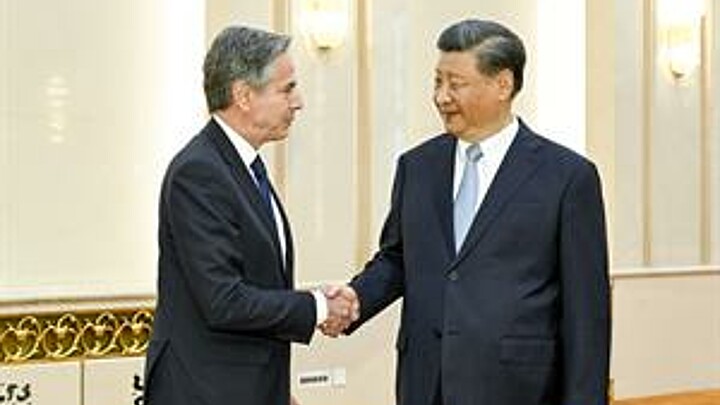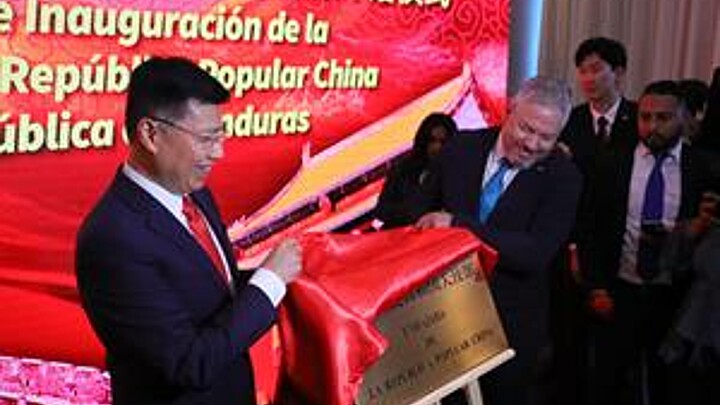Politics
Taiwan launches fighter jets to repel Chinese bombers invading its airspace
The People’s Liberation Army Air Force sent 29 military aircraft into Taiwan’s Air Defense Identification Zone
June 23, 2022 11:15am
Updated: June 23, 2022 12:49pm
The Taiwanese Air Force—known formally as the Republic of China Air Force — launched military jets this week to fend off 29 Chinese aircraft, including bombers that crossed into its Air Defense Identification Zone (ADIZ).
The ADIZ is an informal oceanic airspace buffer zone in international waters. Although it is often not illegal for foreign powers to fly into the ADIZ of another country, it is discouraged and raises national security concerns.
This week’s incursion involved bombers from the People’s Liberation Army Air Force that crossed Taiwan’s airspace from the south of the island, skirting the country along the Pacific Ocean and near the Taiwanese controlled Pratas Islands.
The bombers, which were reportedly accompanied by an electronic warfare and intelligence gathering jet, also flew into an area called the Bashi Channel which divides Taiwan from the Philippines.
The airspace violation is nothing new as the People’s Republic has previously sent jets into the country’s air defense identification zone and airspace while also chartering naval vessels into its waters amidst the ongoing debate as to whether Taiwan will remain independent.
China has claimed Taiwan is part of its territory, and in its most recent incursion of the island, it flew six H-6 bombers and 17 fighter jets into the island’s airspace, according to Taiwan's defense ministry.
This week’s incursion was the most sizeable since China sent 30 aircraft into the Taiwanese ADIZ May 30. The largest this year was on Jan. 23 when China flew 39 jets into Taiwanese airspace raising global concerns about a possible invasion.
Some of China’s jets ultimately flew east to the Pratas Islands, which are also under Taiwan’s jurisdiction.
Taiwan responded by dispatching fighter jets to ward off the enemy aircraft and also had its missile systems on ready alert.
Taiwanese Foreign Affairs Minister, Joseph Wu, said China’s incursions are “more serious than ever.” He added on Twitter, “But there’s no way #Taiwan will cave & surrender its sovereignty & democracy to the big bully. No chance!”
China’s air force reportedly has 3,370 aircraft and more than 400,000 personnel while Taiwan’s has 600 aircraft and 35,000 personnel.
The People’s Republic has justified the airspace invasions by insisting they are mere air force drills.
Taiwan has disputed that claim, and called the military activity “grey zone” warfare and suggested they are designed to evoke a response from Taiwan’s military.
To date, no shots have been fired between Chinese or Taiwanese aircraft or vessels although two Taiwanese military pilots have died this year with three aircraft losses during training drills amidst the stepped up tension.
On May 31, Taiwan reported the death of a pilot who went down in an AT-3. On January 11, another pilot crashed in an F-16 and in March one pilot survived the crash of a Mirage 2000 after ejecting from the his jet.
At least four Taiwanese aircraft have disappeared or gone missing, according to the Wall Street Journal.
“The Taiwan Air Force has suffered a string of incidents during the past two years, several of them deadly. Two F-5E fighter pilots were killed during a training mission in March. A top-ranking Taiwanese military officer, Shen Yi-ming, was among eight personnel killed in a helicopter crash in January 2020. At least four other pilots have been killed or gone missing in other recent incidents,” the Journal reported.










